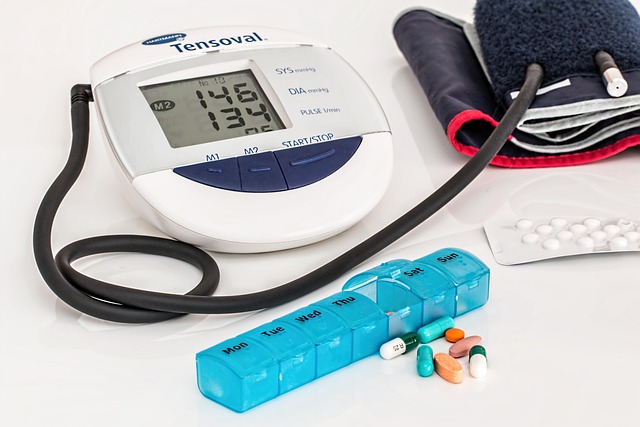Hemoglobinuria: Unexpected Signals You Must Not Ignore
Hemoglobinuria is a rare but serious condition that may silently signal underlying health issues. While often unnoticed in early stages, certain unexpected symptoms could point to a more significant problem. Understanding these signs is essential for timely diagnosis and treatment. This article uncovers the key warning signals of hemoglobinuria and what they could mean for your health.

Hemoglobin in urine is not a typical occurrence and often points to the breakdown of red blood cells within the bloodstream or urinary tract. When red blood cells rupture prematurely, hemoglobin is released and filtered through the kidneys, resulting in discolored urine that may range from pink to dark brown. Understanding the causes, symptoms, and treatment options associated with hemoglobinuria is essential for anyone experiencing unusual urinary changes.
This article is for informational purposes only and should not be considered medical advice. Please consult a qualified healthcare professional for personalized guidance and treatment.
What Are Early Signs of Hemoglobinuria You Might Overlook?
The most obvious sign of hemoglobinuria is a noticeable change in urine color. Urine may appear red, brown, or tea-colored, depending on the concentration of hemoglobin present. However, many individuals overlook subtler symptoms that accompany this condition. Fatigue and weakness are common early indicators, as the body struggles with reduced red blood cell counts. Pale skin, shortness of breath, and an elevated heart rate may also develop as the condition progresses.
Some people experience abdominal or back pain, particularly if the hemoglobin is causing kidney strain or blockage. In cases of paroxysmal nocturnal hemoglobinuria, symptoms may worsen during the night or early morning hours, leading to dark urine upon waking. Frequent infections, unexplained bruising, and jaundice can also signal that red blood cells are being destroyed at an abnormal rate. Recognizing these early signs and seeking medical evaluation promptly can prevent complications and guide appropriate treatment.
How Hemoglobinuria Could Indicate a Deeper Health Issue
Hemoglobinuria is rarely an isolated condition; it typically reflects an underlying disorder affecting red blood cells or the immune system. Hemolytic anemia, where red blood cells are destroyed faster than they can be produced, is a common cause. This can result from autoimmune diseases, infections, certain medications, or inherited conditions like sickle cell disease or glucose-6-phosphate dehydrogenase deficiency.
Paroxysmal nocturnal hemoglobinuria is a rare but serious disorder where defective red blood cells are destroyed by the immune system, particularly during sleep. This condition increases the risk of blood clots, kidney damage, and bone marrow failure. Other potential causes include severe burns, transfusion reactions, intense physical exertion, and exposure to certain toxins or drugs. Identifying the root cause is critical, as treatment strategies vary significantly depending on the underlying condition. Ignoring hemoglobinuria can lead to chronic anemia, organ damage, and life-threatening complications.
Important Diagnostic Steps for Detecting Hemoglobinuria Early
Diagnosing hemoglobinuria involves a combination of clinical evaluation, laboratory tests, and imaging studies. A healthcare provider will begin with a detailed medical history and physical examination, focusing on symptoms, medication use, and family history of blood disorders. Urinalysis is the primary diagnostic tool, revealing the presence of hemoglobin without intact red blood cells, which distinguishes hemoglobinuria from hematuria.
Blood tests are essential to assess hemoglobin levels, red blood cell count, and markers of hemolysis such as lactate dehydrogenase and bilirubin. A peripheral blood smear can identify abnormal red blood cell shapes or fragments. In cases where paroxysmal nocturnal hemoglobinuria is suspected, flow cytometry is used to detect deficient proteins on red blood cell surfaces. Additional tests may include a Coombs test to identify autoimmune hemolytic anemia, kidney function tests, and bone marrow biopsy if a hematologic disorder is suspected. Early and accurate diagnosis is crucial for initiating appropriate treatment and preventing long-term damage.
Myths About Hemoglobin in Urine and How to Approach Them
Several misconceptions surround hemoglobinuria, often leading to delayed diagnosis or unnecessary anxiety. One common myth is that red urine always indicates blood in the urine. While hematuria involves intact red blood cells, hemoglobinuria results from free hemoglobin, and distinguishing between the two requires proper testing. Another misconception is that hemoglobinuria is always caused by kidney disease. Although the kidneys filter hemoglobin, the underlying issue often originates from red blood cell destruction elsewhere in the body.
Some people believe that dietary factors, such as eating beets or certain berries, cause hemoglobinuria. While these foods can temporarily discolor urine, they do not produce true hemoglobinuria. Additionally, there is a myth that hemoglobinuria resolves on its own without treatment. In reality, untreated hemoglobinuria can lead to serious complications, including kidney failure and severe anemia. Consulting a healthcare professional for accurate diagnosis and evidence-based treatment is essential.
Treatment Options for Nocturnal Hemoglobinuria
Treatment for hemoglobinuria depends on the underlying cause and severity of the condition. For paroxysmal nocturnal hemoglobinuria, targeted therapies have significantly improved outcomes. Eculizumab and ravulizumab are monoclonal antibodies that inhibit complement-mediated destruction of red blood cells, reducing hemolysis and associated symptoms. These medications are administered intravenously at specialized treatment centers and require ongoing monitoring.
Supportive care includes blood transfusions to manage severe anemia, folic acid supplementation to support red blood cell production, and anticoagulation therapy to prevent blood clots. In cases of autoimmune hemolytic anemia, corticosteroids or immunosuppressive drugs may be prescribed to reduce immune system activity. For individuals with inherited hemolytic disorders, avoiding triggers such as certain medications, infections, or strenuous exercise is important. Bone marrow transplantation may be considered for severe cases unresponsive to other treatments.
| Treatment Option | Provider/Setting | Key Features |
|---|---|---|
| Eculizumab | Specialized hematology centers | Complement inhibitor, reduces hemolysis, intravenous administration |
| Ravulizumab | Specialized hematology centers | Long-acting complement inhibitor, less frequent dosing |
| Blood Transfusions | Hospitals and outpatient clinics | Immediate relief for severe anemia, supportive care |
| Corticosteroids | Outpatient clinics | Reduces immune-mediated hemolysis, oral or intravenous |
| Bone Marrow Transplant | Transplant centers | Curative option for severe cases, requires matched donor |
Prices, rates, or cost estimates mentioned in this article are based on the latest available information but may change over time. Independent research is advised before making financial decisions.
Managing hemoglobinuria requires a comprehensive approach that addresses both the symptoms and the underlying cause. Regular follow-up with a hematologist or nephrologist ensures that treatment remains effective and complications are minimized. Patients should be educated about recognizing warning signs of worsening hemolysis, such as increased fatigue, darker urine, or new bruising. Lifestyle modifications, including adequate hydration, avoiding known triggers, and maintaining a balanced diet, support overall health and recovery. With appropriate medical care and patient vigilance, many individuals with hemoglobinuria can achieve improved quality of life and long-term stability.




